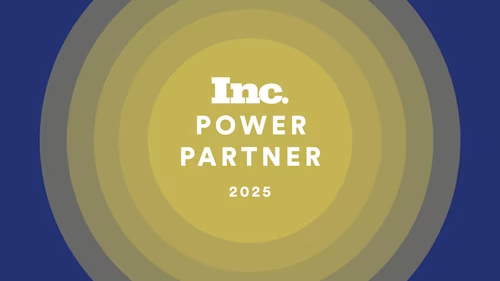
Pathways to Productivity: Insights from Microsoft and Asana
As champions of collaboration, technology leaders like Microsoft and Asana make helping organizations increase productivity central to their mission.

“The purpose of boosting productivity and efficiency isn’t for efficiency's sake but to make room for higher impact work—creativity, strategic thinking, building relationships with customers, learning and professional development.” —Dr. Rebecca Hinds, Head of Asana’s Work Innovation Lab
As champions of collaboration, technology leaders like Microsoft and Asana make helping organizations increase productivity central to their mission. But what does productivity look like in the digital—and human— world?
To better understand how both organizations define, measure and maximize productivity, we spoke to Jason Brommet, Chief Operating Officer for Microsoft's Modern Work and Surface businesses, and Dr. Rebecca Hinds, Head of Asana’s Work Innovation Lab. In these conversations, we uncovered insights for building more productive teams that go beyond leveraging technology.
Align on the meaning of productivity
Productivity is a crucial measure of business performance, but often an ambiguous term that means something different to every team and team member. Alignment on the definition of productivity calls for clear expectations and goals laid out by leadership.
For Brommet at Microsoft, this begins with one essential question: “How do we inspire and fuel the very best of who we are as humans to accomplish more high-value, meaningful work—in a more sustainable way?” In answering this question, organizations have to be clear about what their most urgent priorities are.
Dr. Hinds echoes Brommet’s sentiment that leaders and employees need to be aligned on what productivity looks like at their organization, in their department and on a daily, individual basis: “At its core, productivity measures the output produced from a given set of inputs,” she shares. “Yet simply counting outputs like emails sent or forms filled can be superficial, misleading even. At Asana, we see productivity as more than just ticking off tasks—it's about working smarter and ensuring employees have clarity on what they should focus on, and maximizing their impact across the organization.”
When employees have a clear and unified understanding of their roles and responsibilities along with the larger picture of organizational goals, the definition of productivity comes into sharper focus. “Your team won’t be productive if you don’t ask your people what this word means to them or if you don’t have a unified definition or method of measuring it across your org,” Brommet says. Dr. Hinds adds that the foundational tenets of productivity—clarity, alignment and efficiency—should be consistent across the business, even though the day-to-day work and skills will depend on the department and people.
Implement a measurement model
Once a team is aligned on what productivity means at the organizational, departmental and personal level, the next step is implementing a systematic way of measuring progress.
“As a leader, you can’t optimize what you don’t measure,” says Dr. Hinds. “Measuring productivity ought to be non-negotiable for you and your organization. When you connect individual and team tasks and projects to organizational goals and milestones, you can glean a much more accurate measure of productivity.” For both Brommet and Dr. Hinds, this requires a data-driven approach. “But it doesn’t mean time cards or employee monitoring software,” Brommet cautions.
So what does this look like in practice? “At Microsoft, it’s not about isolating individuals but rather looking for patterns of recognition across departments,” Brommet says. Reports about the length of meetings, who is attending meetings and if it’s relevant to the projects on their plate can reveal whether an individual’s time is being optimized—or wasted. Tools that give insight into employee workload are invaluable in providing transparency about time allocation and utility.
The impact is transformational: Asana’s Work Innovation Lab ran a study that asked all participants to fully clear their calendars for a period of 48 hours, only adding back in the meetings that were deemed high-value. As a result, individuals saved an average of 11 hours/month.
“[With a data-driven model in place] teams can connect tasks and projects to specific goals. For individuals, this provides a clear view of how their contributions align with the company's broader objectives, giving purpose to their tasks. For leaders, this offers an overview of team progress, allowing them to identify bottlenecks or areas requiring intervention promptly,” Dr. Hinds explains. As the Asana study showed, when employees were freed up from tasks that didn’t align with broader company goals and encouraged to determine the best use of their time, their skills were put to better use.
Cultivate a culture of trust and learning
An organization’s most valuable asset is its people. “At work, we want to be empowered to accomplish things on our own—of course. But beyond that, we want to unlock the potential of the group,” Brommet shares. Unlocking that potential calls for a culture rooted in collaboration, personal and professional development and trust.
For both Microsoft and Asana, collaboration and learning are the cornerstones of a productive, growth-oriented culture. “In today’s work environment, it’s crucial that we lean on each other and learn from the collective,” Brommet says. “Our work requires us to build new skills often and keep pace with evolving technology. We need to collaborate and seek consistent feedback from our teams to build a culture committed to growth and a positive mindset.”
In other words: you can’t understand what your people need to operate at peak potential if you don’t ask them or trust them in the work they’re doing. “As leaders, we need to consistently communicate with people and trust them with the responsibilities they’re given,” Brommet says.
At Asana, we’re equally invested in “encouraging a work environment where continuous feedback is valued. By promoting a culture of learning and adaptation, teams remain agile, open to improvement, and consistently aim for higher standards,” Dr. Hind says.
Invest in automation in a meaningful way
Brommet and Dr. Hinds find that the most productive organizations—and those getting ahead of the curve—are making meaningful investments in automation. But they caution, a tool is only as powerful as its user is knowledgeable and bought into the process.
Dr. Hinds puts it this way: “The influx of AI tools has emphasized that productivity is both about human effort and leveraging technology to automate routine tasks, gain insights and allow teams to focus on more strategic and creative endeavors.”
When repetitive tasks are automated, there is greater consistency, fewer errors and more time for high-value work. Brommet cites his own workday as a prime example of where automation can accelerate productivity: “The functional task of approving contracts, invoices, etc. is a drag. Automation has absolutely transformed my work life and saved me time, giving me one notification for all approvals I need to handle, summarizing conversations from meetings I am late to, helping me start projects by generating rough drafts and more,” he says.
Automation has absolutely transformed my work life and saved me time, giving me one notification for all approvals I need to handle, summarizing conversations from meetings I am late to, helping me start projects by generating rough drafts and more.
Jason BrommetChief Operating Officer, Modern Work and Surface, Microsoft
It’s not about replacing human talent but rather “offload[ing] the drudgery of work to make machines work harder for us, so we get back our most valuable time,” Brommet explains. This is only effective when leadership asks employees about what day-to-day work is holding them back from higher-value priorities, seeks recurring feedback and educates teams about new tools.
“Consider an employee who leverages AI to assign tasks rapidly,” Dr. Hinds proposes. “Without a holistic view, this can inadvertently lead to collaboration congestion and excessive demands on teammates. This underscores the need for a balanced approach, ensuring individual AI-driven gains don't compromise the collective wellbeing and efficiency of the organization.”
A more productive future is technology and human-driven
“Productivity is a journey, not a destination. It's about evolving and adapting to continually deliver meaningful results in an ever-changing landscape,” Dr. Hinds advises. As technology continues to evolve rapidly, industry leaders like Microsoft or Asana are constantly reevaluating how they define, measure and maximize productivity for both their own organizations and their customers.
Based on their experiences and research, these thought leaders recommend starting with alignment of what productivity means all across the organization, implementing a model of measurement that’s less about the volume of inputs and more about meeting objectives, cultivating a culture of trust and learning and using technology to eliminate drudgery. As advocates for individual empowerment, team collaboration, and organization-wide efficiency, both offer a compelling business case for a human approach to leveraging technology and unleashing strategic minds.
Interested in leading your organization to the next level of collaboration and achieving company-wide goals faster? Explore automated contract management tools and integrations for all teams with Docusign.
Related posts
Docusign IAM is the agreement platform your business needs



